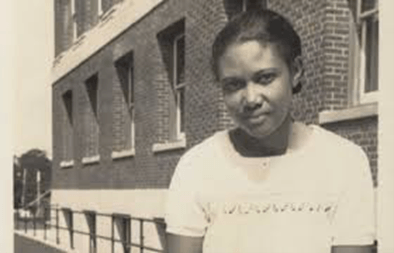Roger Arliner Young: The First African American Woman to Earn a Doctrine in Zoology.
Throughout history there are countless hidden figures whose contribution to science, technology, engineering and mathematics (STEM) has long been ignored. While the work of many women of colour is slowly being recognised, there is still a major underrepresentation of BAME (black, asian and minority ethnic) women in STEM careers. Diversity within the environmental sector is vital for the successful implementation of conservation worldwide.
Roger Arlier Young was an American scientist who studied biology, zoology, and marine biology. In 1940 she receive her PhD in zoology, making her the first black women to gain a doctorate within the field. Young’s perseverance and talent makes her an important figure in STEM, alongside other great names such as Mary Jackson (NASA’s first black female engineer) and Dr. Gladys West (a black female mathematician whose work bought about the invention of GPS).
Young was born in Virginia, 1889 but soon moved to Pennsylvania where she grew up. She originally went to Howard University to study music in 1916, and it wasn’t until 1921 that she would enrol in her first science course. Despite her poor grades her teachers saw promise in her, including Dr. Ernest Everett Just who was a prominent black biologist and head of the Zoology department at Howard. Young became Justs’ protégé and graduated with her bachelors’ degree in zoology in 1923. Once graduated, she accepted a faculty position at Howard and worked as an assistant professor.
The following year, Young enrolled in her masters at Chicago University, where she was invited to join Sigma Xi which was a exclusive scientific research society. This was a great honour as it was highly unusual for a master’s student to join such a prestigious society. Membership was granted upon merit and over 200 members went on to be awarded the Nobel Prize, including Albert Einstein. Young also published her first research paper ‘ On the Excretory Apparatus in Paramecium’ in Science , which looked at how the one-celled organism controlled salt levels. She was the first black woman to publish research within the field.
Young worked with Just for many years. During the summers between 1927 and 1936, Young worked alongside him at the Marine Biological Laboratory in Massachusetts. They investigated the fertilisation process in marine organisms and looked at the process of hydration and dehydration in living cells. The pair also looked at the effects of ultraviolet light on marine eggs. Despite this collaboration, Young’s name does not appear as the co-author on the resulting publications. In early 1929, Just had asked Young to step in as the Head of Howard’s zoology department whilst he was on research trips to Europe and this became a regular occurrence.
Later in 1929, Young returned to Chicago University to start her PhD under the supervision of Frank Lillie. Lillie was an embryologist and had also previously been Just’s mentor years before. Sadly, Young failed to pass the qualifying exams and she disappeared for a while due to her upset. However, she did not blame her failure on racism, sexism or the immense amount of work she had carried out for Just and wrote in a letter to Lillie that she was simply worn out.
Young finally returned to teaching at Howard University but her relationship with Just had been severely affected and she was later fired in 1936. Instead of giving up, Young took the opportunity to return to school to finish her PhD. She attended the University of Pennsylvania under the advisory Dr. Lewis V. Heilbrunn. Her thesis investigated the effects of x-rays on marine eggs and she finally earned her PhD in 1940.
After this, Young became an assistant professor at the North Carolina Central University, previously called the North Carolina College for Negroes. Originally opened in 1910 by Dr. James E. Shepard (a successful black business man) it was the nations first state supported liberal arts university of black students. Young later became the chair of biology at Shaw University, also in North Carolina.
Young faced many challenges throughout her life including poverty, caring for her sick mother from a young age and struggling with her own mental health. In 1953 her mother died and with her mental health worsening, she voluntarily commitment herself to the Mississippi State Mental Asylum. In 1962, Young was released and took a position at the Southern University in New Orleans as a visiting lecturer. Sadly, Young passed away in November 1964 in New Orleans.
To honour Young’s work, achievements and to recognise multiple social and personal challenges she overcame, the Roger Arliner Young (RAY) Diversity Fellowship has been set up. It aims to increase racial diversity and equality within the environmental sector by supporting recent university graduates. Climate change and environmental stressors disproportionately affect communities of colour. This highlights the need to have and support strong leaders of colour within conservation to ensure future sustainability.
References:
Diaz M, Celebrating the First Black Female Zoologist, 2017, Blog Ocean Currents
Spangenburg, R., Moser, D. and Long, D., 2014. African Americans in science, math, and invention . Infobase Publishing.
U-News, 2018, Celebrating Women in STEM: Dr. Roger Arliner Young , University News, < https://info.umkc.edu/unews/celebrating-women-in-stem-dr-roger-arliner-young/ >
Young, Roger Arliner 1899–1964 . Contemporary Black Biography . . Encyclopedia.com. 26 Jun. 2020 < https://www.encyclopedia.com >.
SHARE THIS ARTICLE














